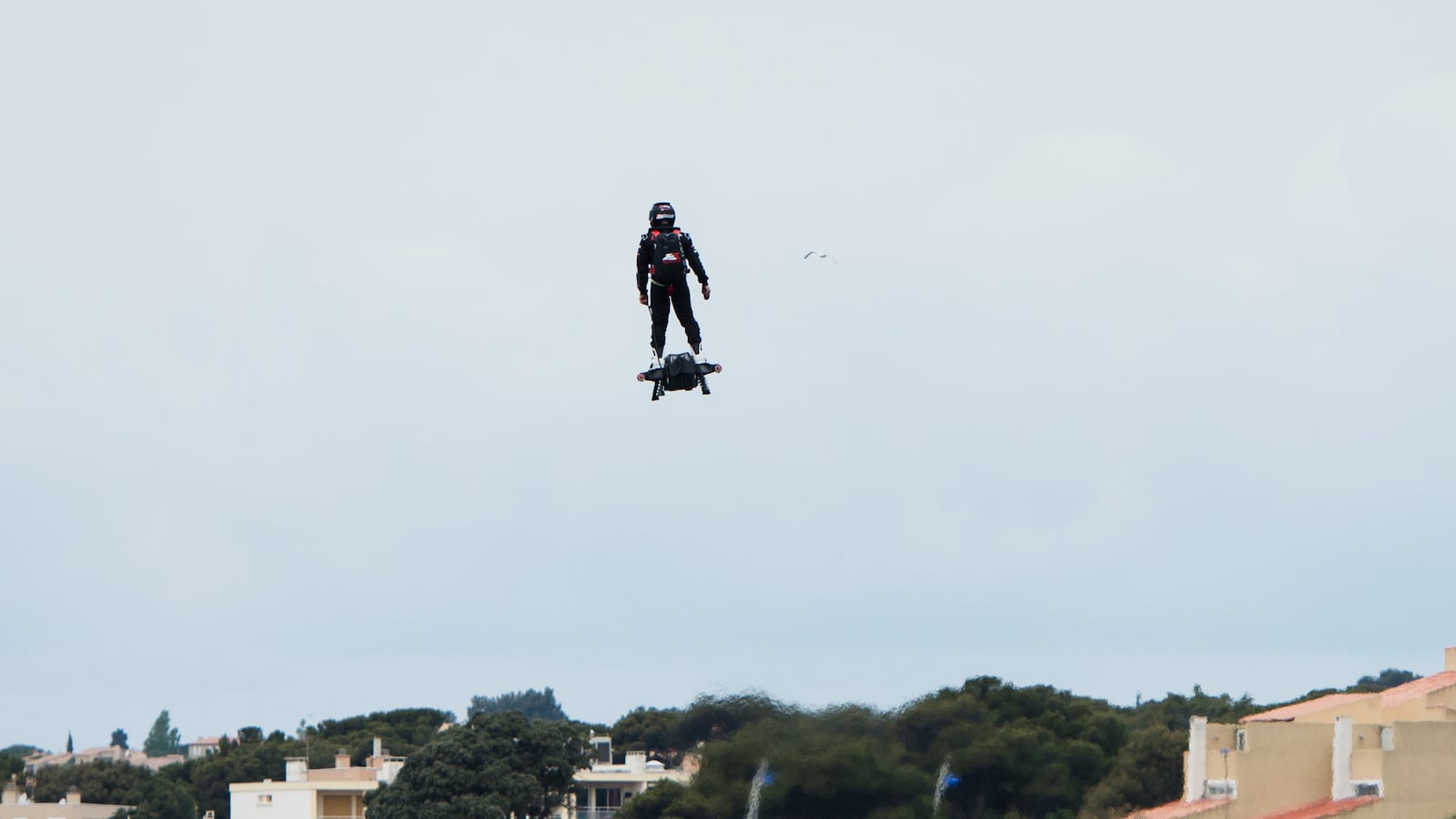We finally got what we wanted: after a year of tolerating annoying dual-wheeled “hoverboard” impostors, two different inventors have brought to market real, genuinely hovering personal vehicles that are meant for carefree gliding above the pavement.
But even without new safety regulations, hoverboards already might be in jeopardy of never hitting the streets (or the air above them). Before we ground your hopes, let’s look at the two rising stars of the hoverboard world.
The hoverboard you’re likely to see this year is ArcaBoard, a battery-powered, fan-propelled, LEGO-like box that can get 20 inches off the ground and whip around above the pavement for half an hour before needing a charge. Production has already started on the $15,000 boards, and they’re likely to start selling as early as this month.
But the crowning (and record-breaking) achievement in hover technology is much farther from production despite its accomplishments. The same man who created the water-propelled Flyboard is now back with a kerosene-fueled Flyboard Air, which is the closest in resemblance to Griff’s high-powered hoverboard in Back to the Future Part II.
You wouldn’t necessarily want to strap a backpack full of kerosene to your shoulders and lift off with nothing to stop you from careening to your death save for your own wits, but the board’s inventor did just that. What’s more, he shattered the pre-existing record for longest (and highest) flight of a hoverboard yet.
We won’t see Flyboard Air (which some assumed was a hoax) anywhere but in videos for quite some time—you probably want them to make a gas tank before purchasing one—but when we do, it’s a vehicle capable of whipping you down the street at over 90 mph, and, furthermore, is claimed to be capable of reaching the clouds.
That one will likely cost more than $15,000, since mechanically it’s closer to a smart motorcycle than an electric scooter. The price tag isn’t much to intimidate a wealthy city dweller, though. And anyone who hates traffic and public transit might, for instance, enjoy the idea of zipping down from their Upper West Side condo balcony atop a true hoverboard, whizzing overtop of the creeping street traffic, and dismounting in front of their office, all in the span of a few short minutes.
But it’s entirely possibly that the money and time saved there would quickly go toward extensive traffic fines, at least in New York, London, and plenty of other places.
While hoverboards are not illegal in their own right, they’re illegal by default in some places. New York laws ban any motor vehicle that does not fit the description of an existing vehicle description. In other words, because the hoverboard isn’t a car, a motorcycle, a scooter, or a motorized skateboard, it’s an illegal mode of transportation. The same is true in the U.K. and several other places.
But regulating future hoverboards may not be exclusively in the hands of local transportation officials, especially as some of these models begin to achieve heights that put them in the arena of the FAA. It’s simply too early to tell whether these devices will require driver’s licenses, pilot’s licenses, both, or (because they’re deemed illegal) neither.
At the moment, whipping through downtown Manhattan on a flying skateboard is something only Spider-man villains are doing, and only in the movies. But if there’s a way to avoid rush-hour traffic, it won’t take long for someone to give it a try.





